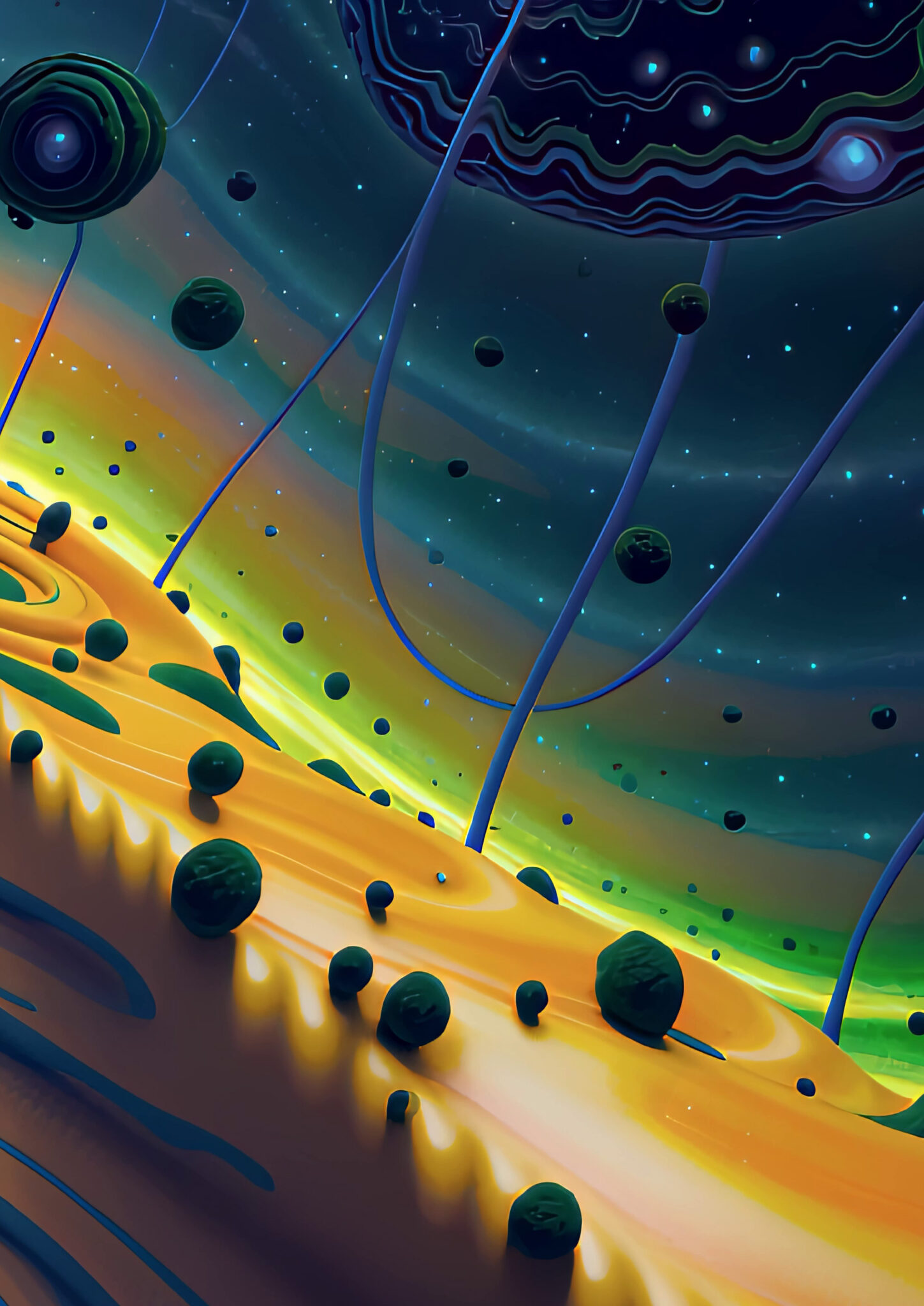
Nelo Akamatsu
Chozumaki
CHOZUMAKI by Nelo Akamatsu consists of a glass vessel filled with water. A small winged magnet rotating at the bottom of the vessel produces a vortex. The tiny bubbles cause curious sounds when they are swallowed into the vortex. Viewers will hear these sounds through a spiral pipe shaped like a cochlear duct. Countless vortices exist in the universe, including the enormous revolution of the galaxy and also the minimal spin of electrons. They all have a fractal structure that seems to be one of the fundamental elements of the universe. Water has another important role in this work. In numerous cultures is associated with purification. The sight and sound of the water vortex that is constantly changing shape will remind viewers of crossing the boundary between the physical world and the psychological world, and will extend their perception of vital organs.





